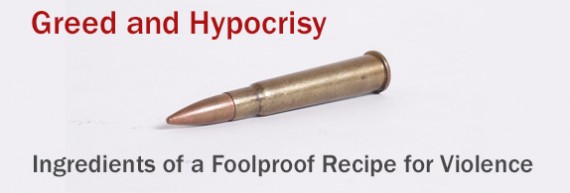On July 20th, 2012, just at the start of a midnight showing of the new Batman blockbuster at a movie theater in Aurora, Colorado, a 24-year-old lone gunman stood to one side of the screen, lobbed a couple of canisters of smoke-producing gas at the audience and then began shooting. He was armed with an assault weapon, a 12-gage shotgun, a couple of Glocks and a small armory’s worth of ammunition. His barrage of bullets killed 12 moviegoers and wounded 50 others, many of them seriously. Dressed in battle gear, he then calmly left the theater, went out into a back parking lot and sat in his car—where police captured him without a struggle minutes later. When they went to his apartment to look for evidence of motive, they found the place booby-trapped with high-powered explosives. Had anyone come through the front door they would have been blown to bits.
The obviously mentally ill shooter was brought to court in a silent daze. People asking why weren’t getting very far. There was no web site or Facebook or Twitter clue explaining his siege of terror. He seemed to have acted alone, with no connection to any sort of survivalist, religious, or terrorist group—foreign or homegrown. And, contrary to the instigators of this country’s run of previous mass murders, he wasn’t a misfit about whom it could be said that he was resentful, “strange,” or didn’t fit in. No, this guy was a brilliant doctoral student in neurosci-ence. And so the commercial media gave itself once more to the story, the backstory, and every back-backstory it could dig up. Once again, a tragedy of this sort would obscure even the most remote pretense at reporting any other news. The nation’s TV audience would be riveted to the drama in Aurora for days or weeks.
Fast forward to Newtown, Connecticut, December 14th, 2013. Less than six months after the Aurora shooting, 20-year-old Adam Lanza shot and killed his mother Nancy in her bed, with four shots to her head. Then he drove to the community’s Sandy Hook Elementary School, shot his way into the building, and intensified a rampage that would end with the brutal deaths of twenty first- and second-graders and six heroic teachers and staff. His mother had purchased the several assault weapons and numerous rounds of ammunition. She had been the one who taught her son how to shoot.
After each of these tragedies, as after that at Virginia Tech and others, there has been timid talk of the need for gun control, questions about whether or not lurid video games and violence-ridden films provoke such psychotic breaks at the extremist edges of our population, and candidates on both sides of an increasingly homogeneous political scene playing the grief card while attempting to turn the in-cident to their advantage. The Newtown shooting provoked more than the usual upswing in response, no doubt because of the tender age of its victims and the heroism of those committed to protecting them. Public figures with the credibility of ex-Representative Gabrielle Giffords of Arizona—herself a survivor of yet another such violent event—now dedicates herself to the push for gun control. New York Mayor Michael Bloomberg is lending his personal millions to that effort. Still, after all the outraged speeches in the Senate and House of Representatives, after the NRA’s well-funded pushback, and an ongoing range of political posturing, the Newtown graves are still fresh and already all attempts at gun control on the part of the US government have been watered down to the point where they will not affect the problem at all. Political careers obviously trump the lives of ordinary citizens, even children.
In the midst of such grotesque irrelevance, not long after the Aurora, Colorado shooting the New York Times carried an excellent opinion piece by Jonas Gahr Store, Norway’s Minister of Foreign Affairs. Without mentioning Aurora, Store referred to his own country’s tragedy a year ago before, when a lone gunman murdered 77 and injured hundreds of others in one of the worst extremist attacks Western Europe had experienced since World War II.
In a particularly substantive part of his piece, Store wrote: “The last decade has shown us that ideology can never fully explain why specific groups or individu-als commit unimaginable acts. Social, psychological and individual factors always play crucial roles. Yet political extremism does not grow in a vacuum. Ideas are the oxygen that allows it to flourish and spread. Extremist perspectives win sympathy and recruits because they offer narratives that claim to identify deep injustices and enemies. Without this fuel, the blaze of extremism is quickly extinguished. Al Qaeda networks were nourished by the ideas of Islamic fundamentalists just as [the Nor-wegian gunman] involved and may have drawn sustenance from the ideas and stories of other Western extremists.”




Comments closed for this entry.